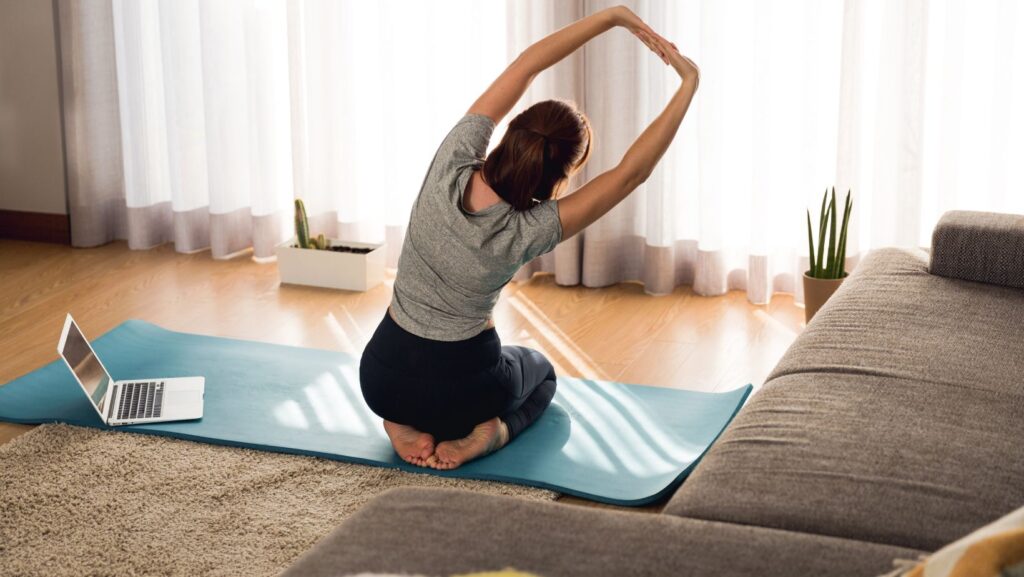Vestibular hypofunction can significantly impact daily life, causing dizziness and balance issues. Fortunately, simple exercises can help manage these symptoms effectively. Vestibular rehabilitation therapy, which includes specific exercises targeting the vestibular system, has shown promising results in improving balance and reducing dizziness.
Gaze stability exercises are particularly beneficial for those with vestibular hypofunction. These involve focusing on a stationary object while moving the head, gradually increasing speed and complexity. Another effective technique is the Cawthorne-Cooksey habituation exercises, which include head movements and eye exercises to retrain the brain’s interpretation of vestibular signals.
Incorporating vestibular exercises into a daily routine can significantly improve symptoms and overall quality of life. It’s essential to start slowly and progressively increase the difficulty of exercises under the guidance of a healthcare professional. With consistent practice, many individuals experience reduced dizziness and improved balance, allowing them to regain confidence in their daily activities.
Key Takeaways
- Gaze stability exercises effectively improve vestibular function
- Cawthorne-Cooksey exercises help retrain the brain’s interpretation of vestibular signals
- Consistent practice of vestibular exercises can significantly reduce symptoms and improve quality of life
Understanding Vestibular Hypofunction
Vestibular hypofunction is a condition affecting the inner ear’s balance system. It can lead to dizziness, imbalance, and vision problems, impacting daily activities and quality of life.
The Role of the Vestibular System
The vestibular system, located in the inner ear, plays a crucial role in maintaining balance and spatial orientation. It works in conjunction with the eyes and central nervous system to help the body stay upright and navigate the environment.
This complex system consists of semicircular canals and otolith organs that detect head movements and position changes. When functioning properly, it allows for smooth eye movements and stable body posture.
Vestibular information is processed by the brain to coordinate movement and maintain equilibrium. Any disruption in this system can lead to vestibular disorders and associated symptoms.
Symptoms and Diagnosis of Vestibular Disorders
Common symptoms of vestibular hypofunction include dizziness, vertigo, and imbalance. Patients may experience difficulty walking straight or maintaining steady vision while moving their head.

Other signs include nausea, fatigue, and problems with concentration. These symptoms can vary in intensity and duration, often worsening with head movements or changes in position.
Diagnosis typically involves a combination of medical history review, physical examination, and specialized tests. These may include videonystagmography (VNG) to assess eye movements and vestibular function.
Audiological evaluations and imaging studies might also be necessary to rule out other conditions and pinpoint the exact cause of vestibular dysfunction.
Causes and Impact on Daily Activities
Vestibular hypofunction can result from various factors, including viral infections, certain medications, head injuries, or age-related degeneration. In some cases, the cause remains unknown.
The condition can significantly impact daily life, making simple tasks challenging. Individuals may struggle with:
- Walking or driving
- Reading or using a computer
- Participating in sports or physical activities
- Maintaining balance in dimly lit environments
These difficulties can lead to reduced independence and increased risk of falls, especially in older adults. Many people with vestibular disorders experience anxiety or depression due to the limitations imposed by their symptoms.
Recognizing the impact of vestibular hypofunction is crucial for developing effective management strategies and improving patients’ quality of life.
Rehabilitation and Management Strategies
Vestibular rehabilitation therapy offers effective strategies to manage symptoms of vestibular hypofunction. Key approaches include balance exercises, gaze stabilization techniques, and habituation training.
Overview of Vestibular Rehabilitation Therapy
Vestibular rehabilitation therapy (VRT) is a specialized program designed to alleviate symptoms associated with vestibular disorders. It focuses on improving balance, reducing dizziness, and enhancing overall function. VRT typically involves a customized exercise plan tailored to each individual’s needs.
Physical therapists assess patients and develop personalized protocols. These may include:
- Gaze stabilization exercises
- Balance training
- Habituation exercises
- Adaptation exercises
VRT aims to promote vestibular compensation, where the brain learns to use alternative strategies to maintain balance and reduce symptoms.
Exercises for Enhancing Balance and Stability
Balance exercises form a crucial component of vestibular rehabilitation. These activities challenge the vestibular system and help improve postural stability.

Common balance exercises include:
- Standing on one foot
- Walking heel-to-toe
- Standing on an unstable surface
- Tai chi movements
Progression is key. Exercises start simple and gradually increase in difficulty. For example, a patient might begin by standing with feet together, then progress to standing on one foot with eyes open, and eventually with eyes closed.
Gaze stabilization exercises help improve visual acuity during head movements. These involve focusing on a target while moving the head in various directions.
Advanced Techniques for Symptom Management
As patients progress, more advanced techniques can be introduced to further challenge the vestibular system and manage persistent symptoms.
Complex balance exercises might include:
- Walking while turning the head
- Performing cognitive tasks during balance activities
- Navigating obstacle courses
Habituation exercises aim to reduce dizziness triggered by specific movements or environments. Patients repeatedly expose themselves to provocative stimuli in controlled settings.
Home-based exercises play a crucial role in long-term management. Patients learn to perform exercises safely at home, gradually increasing duration and complexity under guidance from their physical therapist.
Incorporating vestibular exercises into daily activities helps reinforce progress and maintain improvements over time.
Conclusion
Simple exercises can effectively manage vestibular hypofunction symptoms. Gaze stabilization, balance training, and habituation exercises form the core of vestibular rehabilitation. These targeted movements help retrain the brain and improve balance, coordination, and dizziness.
Consistent practice and gradual progression are key to achieving optimal results. Patients should work closely with healthcare providers to develop personalized exercise plans tailored to their specific needs and symptoms.
